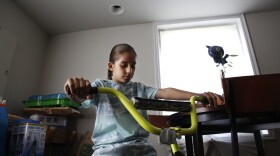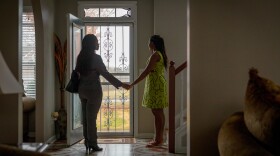Christine Herman
Christine Herman spent nine years studying chemistry before she left the bench to report on issues at the intersection of science and society. She started in radio in 2014 as a journalism graduate student at the University of Illinois and a broadcast intern at Radio Health Journal. Christine has been working at WILL since 2015.
-
The U.S. is the only industrialized nation where the rate of pregnancy-related deaths is rising. Experts say one way to save lives is making sure new mothers don't lose their health insurance.
-
The U.S. is the only industrialized nation where the rate of pregnancy-related deaths is rising. Black mothers face the highest risk, and the CDC estimates over half of these deaths are preventable.
-
The pandemic has been stressful for millions of children. If that stress isn't buffered by caring adults, it can have lifelong consequences. There's a lot schools can do to keep that from happening.
-
Some states are prioritizing farmworkers in their vaccine rollout. Many of these workers are from Mexico, and are getting vaccinated much sooner than they would in their home countries.
-
On a recent Saturday, white vans shuttled small groups of migrant farmworkers from the southern Illinois orchard where they work to St. Joseph’s...
-
Getting COVID-19 tests and vaccine to essential workers on commercial farms and in meatpacking plants requires more than a pop-up clinic miles away. A positive test can be financially devastating.
-
For more than a decade, Saraí has been a farmworker, cultivating corn and soybeans in the fields of central Illinois. She moved to the U.S. from Mexico...
-
When schools closed last spring, children with severe mental illnesses were cut off from the services they'd come to rely on. Many have since spiraled into emergency rooms and even police custody.
-
On the outskirts of Rantoul, in east-central Illinois, about 100 migrant farmworkers are living at an old hotel in a sleepy part of town. Every day at...
-
Getting mental health treatment to inmates who need it requires money and unprecedented collaboration between state and county departments of criminal justice and social services. Is it working?









